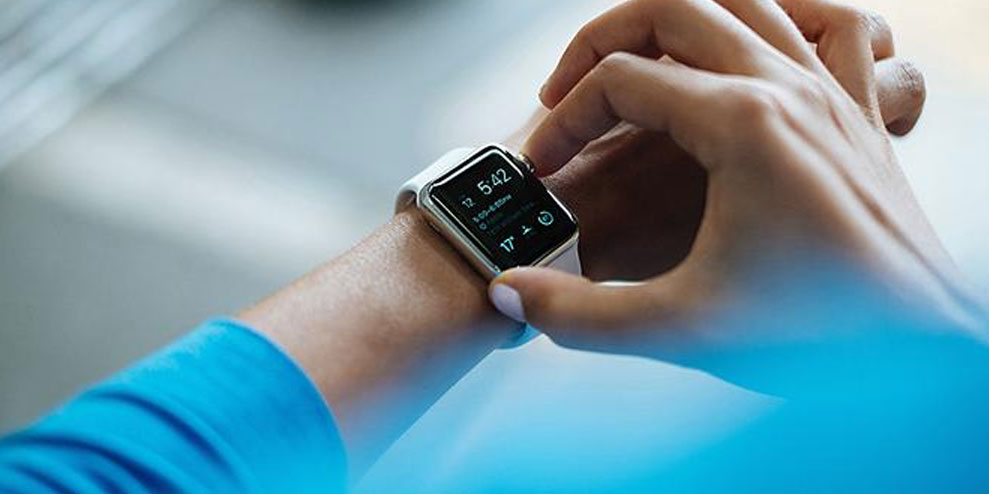Wearables can bring brands into the fold with customers and provide immersive insights. CMO looks at wearables in 2020 and the impact of COVID-19.
Smart wearable devices, from smartwatches to health trackers, are giving brands interactive ways to communicate with customers and leading to new types of insights from real-time and location-based data. And with COVID-19, we could see new devices and services developing to address some of the emerging health and medical issues.
Gartner estimates the global wearable device market will be worth more than US$87 billion in 2023 and smaller, clinical-grade sensors for health wearables will increase monitoring accuracy, with miniaturising capabilities developing to the point that 10 per cent of all wearables will be unobtrusive by 2023.
GlobalData disruptive tech analyst, Venkata Naveen, said the wearable tech ecosystem is maturing at the same time as the number of smart devices is growing, leading to enough data to glean actionable insights and even replace traditional customer touchpoints. Naveen cited simple tasks such as providing location-based ads to creating tap-and-go payments as some of the wearable device use cases that are expanding, and it’s happening across industries, from insurance, banking, travel and tourism to oil and gas.
Naveen told CMO wearable devices offer something that conventional mobile devices cannot – real-time customer insights that can help enterprises to engage customers and promote their brands.
“Wearable devices are a game-changing technology for enterprises looking to leverage the constant flow of customer data to provide the next level of personalised engagement,” he said. “PepsiCo and Coca Cola are collecting the crowd data at live concerts using ‘Lightwave bracelets’ to analyse audience engagement levels. Jawbone’s Up Coffee tracks caffeine consumption levels of customers. With this data, brands like Starbuck signed an agreement with Tazo to cross-sell caffeine-free, herbal teas on the app once the daily caffeine intake has been reached for their customers.”
ABI Research analyst, Stephanie Tomsett, also saw wearable technology continuing to experiencing growth as a market, with consumers shifting from activity tracker devices to smartwatches, as smartwatches are increasingly offering activity tracking features alongside smartphone notification features.
“Consumers are more commonly opting for smartwatches that offer an increasing number of features, preventing the need for purchasing multiple wearables for different uses,” she said.
The COVID-19 effect on wearables
Tomsett said healthcare wearables are experiencing a large amount of growth with the coronavirus pandemic, driven by an increased awareness of the ability to track patient healthcare. “New devices have been investigated to aid tracking and monitoring of COVID-19,” she said.
“Contact tracing wearables, which track who has the virus and alert those who they have been in contact with to ensure they isolate immediately and prevent further spread. And also healthcare trackers, which are designed to remotely monitor patients’ recovery to reduce the amount of human interaction required.
“It’s likely that contactless transactions using wearables will increase to help lower the amount of physical interaction when making payments.”
Yet Tomsett expected COVID-19 to have an effect on the wearables market as a whole, with shipments in 2020 slated to be 27 million fewer than previously forecasted, now at 254 million.
“Shipments are expected to recover and be back on track by 2023 and into 2024. However, healthcare wearables are expected to see a larger increase in uptake due to the ability of these devices to track the spread of, and monitor patients with, COVID-19,” she continued.
With wide acceptance of contactless technologies amid COVID-19, biometrics-based payments through the face and touch recognition will become a routine in the post-pandemic world to address security concerns with the current methods and transform the payments ecosystem, Naveen predicted. He said companies are rapidly deploying wearables, with studies on early detection, proximity scanning and contact tracing activities around the world.
The primary challenge facing wearable vendors and carriers, especially for smartwatches, is that a killer computing use case has not emerged. Again, COVID-19 tracking and detection could change that.
“Medical groups and universities in collaboration with technology companies are in the midst of several COVID-19 studies using wearables,” Naveen said. “Fitbit and Apple are using trackers and smartwatches to gauge how wearables can help in early detection and mitigate spread.
“If the studies are successful, COVID-19 will not only present a new use case for wearables, but also open up an additional source of revenue for both carriers and OEMs. However, screening and tracking – whether opt-in or mandatory – presents a host of privacy challenges.”
“Though the pace of growth is unlikely to subside, brands need to safeguard personal data of users to increase their confidence and remain competitive.”
–
This article first appeared in www.cmo.com.au
Seeking to build and grow your brand using the force of consumer insight, strategic foresight, creative disruption and technology prowess? Talk to us at +971 50 6254340 or mail: engage@groupisd.com or visit www.groupisd.com/story




